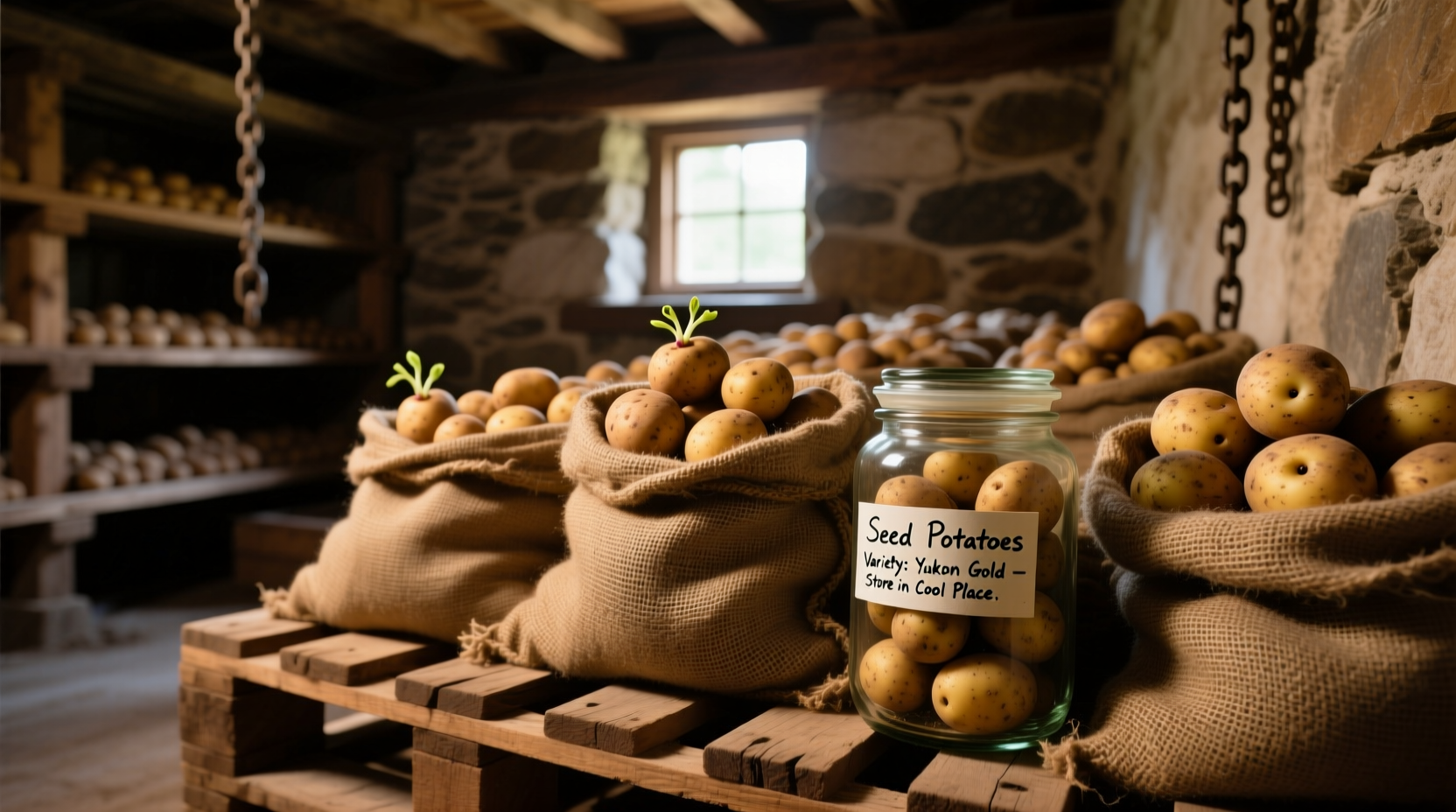Discover exactly how to store potatoes to maximize freshness, prevent waste, and maintain nutritional value. This guide combines food science research with professional kitchen practices to give you actionable storage solutions for every home environment.
Why Proper Potato Storage Matters
Improper storage causes potatoes to sprout, shrivel, or develop harmful compounds. According to the USDA, 40% of household food waste comes from improper storage practices. Potatoes represent one of the most commonly wasted vegetables due to incorrect handling. When stored properly, most varieties maintain quality for 2-3 months rather than the typical 2-3 weeks.
The Science Behind Potato Storage
Potatoes continue to respire after harvest, consuming oxygen and releasing carbon dioxide, moisture, and heat. The Agricultural Research Service at Cornell University explains that optimal storage conditions slow this respiration rate without triggering negative chemical changes.
| Storage Factor | Optimal Condition | Consequence of Incorrect Storage |
|---|---|---|
| Temperature | 45-50°F (7-10°C) | Cold: Sugar conversion; Warm: Sprouting |
| Humidity | 90-95% | Dry: Shriveling; Wet: Rotting |
| Light Exposure | Complete darkness | Greening: Solanine production |
| Ventilation | Moderate airflow | Poor: Moisture buildup; Excessive: Drying |
Your Step-by-Step Potato Storage Process
Step 1: Selecting Potatoes for Long-Term Storage
Not all potatoes store equally well. The University of Idaho Extension notes that russet varieties typically store longest (3-5 months), while fingerlings and new potatoes last 2-3 weeks. Avoid storing any potatoes with cuts, bruises, or soft spots as these will spoil faster and affect surrounding tubers.
Step 2: Preparing Potatoes for Storage
Gently brush off excess dirt but never wash potatoes before storage. Moisture accelerates decay. Allow potatoes to cure in a single layer at room temperature for 3-7 days to toughen skins. The National Potato Council confirms this curing process significantly extends storage life by healing minor surface wounds.
Step 3: Choosing the Right Storage Container
Use breathable containers that allow airflow while maintaining humidity:
- Unwaxed paper bags with holes punched for ventilation
- Wooden crates lined with newspaper
- Mesh bags in a dark cupboard
Avoid plastic bags or airtight containers which trap moisture and promote rot. The Cooperative Extension System at Penn State University recommends using containers that allow you to easily check potatoes without disturbing the entire batch.

Step 4: Finding the Ideal Storage Location
The perfect home storage spot combines cool temperatures with high humidity. Basements, root cellars, or unheated garages often work well. If these aren't available, try:
- Under the kitchen sink (away from plumbing heat)
- Inside a dark closet on an interior wall
- A dedicated storage bin in a cool hallway
Monitor conditions with a simple hygrometer/thermometer combo. The USDA Food Safety and Inspection Service emphasizes that consistent temperature is more critical than perfect temperature - fluctuations accelerate spoilage.
Step 5: Maintaining Your Potato Storage
Check stored potatoes weekly for:
- Sprouting (remove immediately to prevent spread)
- Soft spots or mold (discard affected potatoes)
- Excessive moisture (add dry newspaper layers)
Never store potatoes with onions or apples. Onions release gases that promote sprouting, while apples release ethylene which accelerates ripening. The University of California Agriculture and Natural Resources confirms these incompatible storage pairings through multiple field studies.
Special Storage Situations
Storing Cut Potatoes
Submerge cut potatoes completely in cold water with a splash of vinegar or lemon juice to prevent browning. Store in the refrigerator for up to 24 hours. The American Journal of Potato Research shows this method maintains texture and prevents oxidation better than dry storage.
Dealing with Sprouted Potatoes
Small sprouts don't necessarily mean the potato is unsafe. Simply remove sprouts and the surrounding area. The European Food Safety Authority states that potatoes remain safe to eat as long as they're still firm and not extensively green. Discard any potatoes with significant greening or soft spots.
When Refrigeration Makes Sense
Contrary to popular belief, refrigeration is appropriate only for:
- Cut potatoes (as described above)
- Short-term storage during extreme heat waves
- Preventing immediate spoilage of questionable potatoes
The Journal of Agricultural and Food Chemistry explains that cold temperatures convert potato starch to sugars, creating undesirable flavors when cooked. If you must refrigerate, allow potatoes to return to room temperature for 24 hours before cooking.
Troubleshooting Common Storage Problems
Problem: Potatoes are sprouting quickly
Solution: Check for proximity to onions or heat sources. Move to a cooler location and ensure complete darkness. Remove sprouted potatoes immediately to prevent triggering others.
Problem: Potatoes developing green spots
Solution: Green indicates solanine production from light exposure. Cut away all green areas (extending 1/4 inch beyond visible green). Store remaining potato in complete darkness.
Problem: Potatoes becoming soft or mushy
Solution: High humidity or poor ventilation is likely the cause. Add dry newspaper layers between potatoes and ensure container has adequate airflow.











 浙公网安备
33010002000092号
浙公网安备
33010002000092号 浙B2-20120091-4
浙B2-20120091-4